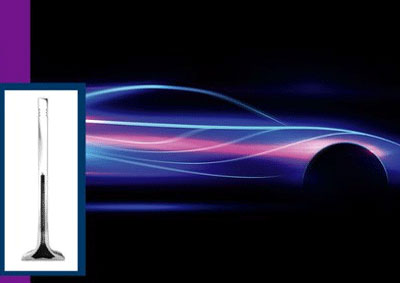
The Vehicle Group of Eaton, a power management company based in Galesburg, east of Kalamazoo, has introduced its next-generation sodium-filled hollow-head valves, which are designed to improve fuel economy, reduce emissions, and increase performance in gas-powered engines.
According to the company, the valves design lowers the cylinder chamber temperature while mitigating engine knock.
The new valves currently are being evaluated by several global automakers, with start of production scheduled for 2023.
“The new generation of Eaton valves represents the next step in valve evolution and will provide solutions customers are asking for,” says Pawel Wolski, valvetrain business unit director for Eaton’s Vehicle Group. “Eaton continues to provide solutions to its customers as vehicle emissions become increasingly stringent.”
Unlike traditional hollow valves, the head portion of the new valves is composed of two separate sections that are welded together during the production process. This enables higher flexibility in the sodium cavity design, increasing volume and assuring optimal sodium flow, according to Eaton. The welding design and its tested technology ensure the valves comply with industry validation targets.
As international emission standards for vehicles tighten, it has led to new homologation cycles and the limiting of emissions worldwide. In the near future, regulations on fuel consumption are expected to be even more demanding, forcing manufacturers to design engines with higher air-to-fuel ratios or reconfigure the entire engine calibration map.
The new valves have the capability to cool down the combustion face and, therefore, the chamber temperature, which increases the spark advance and air-to-fuel ratio because the engine is less inclined to knock. As a result, the brake specific fuel consumption goes up and emissions are reduced.
The new valves have undergone several tests for durability and performance, including:
- Welding fatigue
- Overspeed durability
- Abusive dynamic durability
- Full-power/full-load durability
- Thermometric analysis
- Knock limit characterization
- Brake specific fuel consumption measurement











